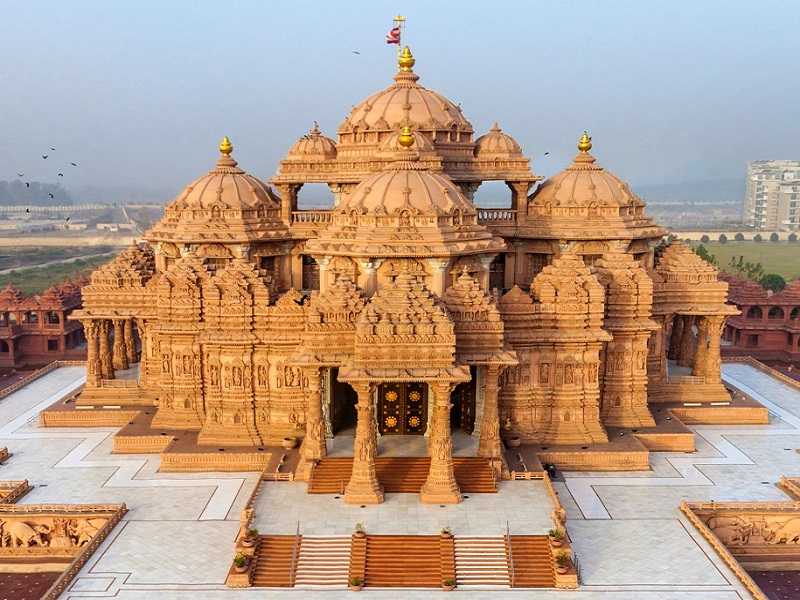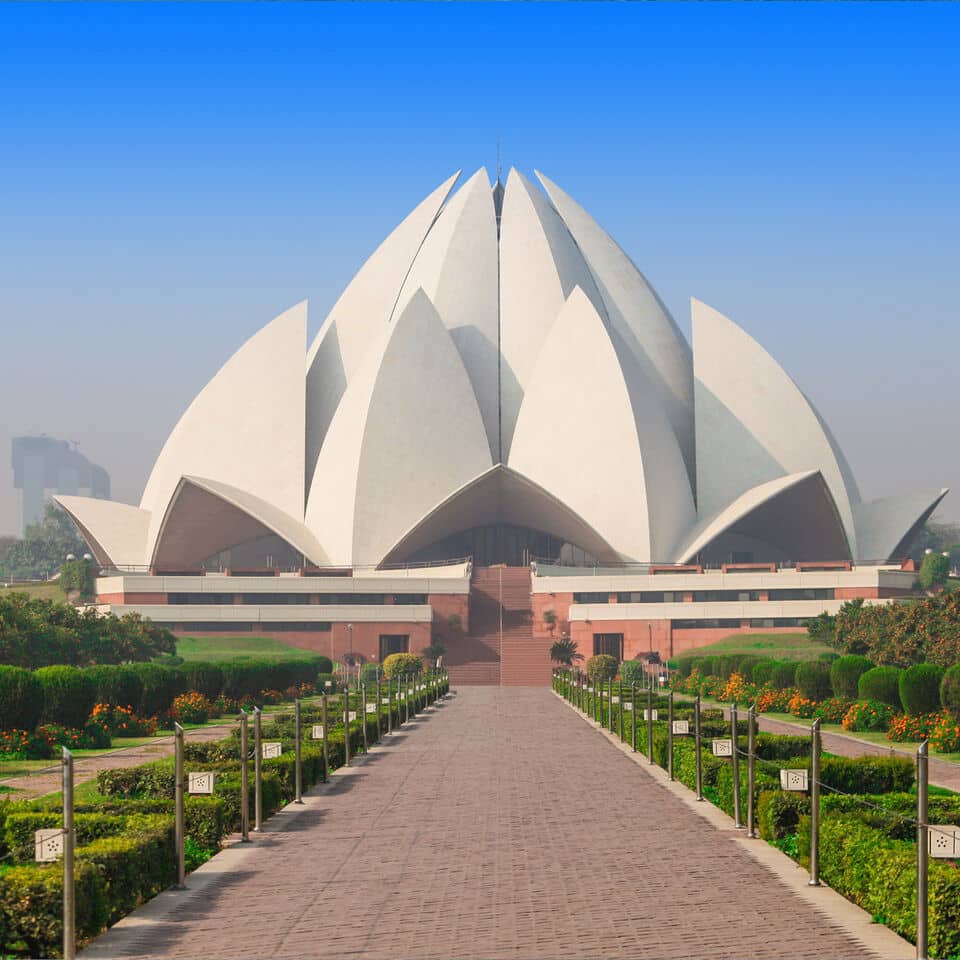Delhi is a city in north-central India that also functions as the nation’s capital. The city of Delhi is divided into two sections: Old Delhi, the historic city in the north, and New Delhi, the capital of India since 1947, which had been developed in the early 20th century as the capital of British India.
Delhi, India’s capital, has a long and distinguished history. It was governed by emperors who were among the most powerful in Indian history.
The city’s history is as old as the Mahabharata epic. Indraprastha was the name of the town where the Pandavas used to live. Indraprastha was eventually joined by eight other cities: Lal Kot, Siri, Dinpanah, Quila Rai Pithora, Ferozabad, Jahanpanah, Tughlakabad, and Shahjahanabad.
For almost five centuries, Delhi has been a hotspot of political strife. After the Khiljis and Tughlaqs, it was governed by the Mughals.
Delhi is more than merely the country’s metropolis and administrative powerhouse. This city, which was a favourite of the Mughals during the 18th century, combines modern and contemporary architecture with unexpected delicacy. Delhi mixes art, culture, architecture, entertainment, fashion, and, of course, politics. This city is a great attraction, attracting millions of tourists each year who are drawn in by its allure. It’s like stepping into the pages of a history book as you walk down its dusty roads; don’t miss it.
September to April

The Red Fort, Delhi’s most iconic structure, is not only a strong reminder of Mughal-era India but also a symbol of India’s battle for independence. It was built by the fifth Mughal emperor Shah Jahan in 1638 when he chose to relocate his capital from Agra. The fort has a tumultuous history that includes captures by the Sikhs and the British. Each evening, a one-hour sound and light performance of the fort’s history is presented to transport your imagination back to the ancient age.
Entry Cost: Indians: 35 INR Foreigners: 500 INR
Opening Hours: 9:30 a.m. to 4:30 p.m., plus light shows in the evenings.
Closed on Mondays.

This vast temple complex, erected by BAPS Swaminarayan Sanstha’s spiritual group opened in 2005, is a relatively recent attraction. It is devoted to promoting Indian culture. The complex features a large garden, sculptures, and a boat trip, in addition to the stunning architecture of the pink stone and white marble shrine. Allow enough time to completely explore it – at least half a day. Please keep in mind that mobile phones and cameras are not permitted inside.
Entry Cost: Free.
Tickets for the exhibition cost INR 200 per person.
Opening Hours: 9.30 a.m. until 6.30 p.m.
Closed on Mondays.

Jama Masjid is another magnificent Old City jewel, and it is one of India’s largest mosques. Its courtyard has a capacity of 25,000 worshipers. The mosque took 12 years to erect and was finished in 1656. A difficult walk to the summit of its southern tower will reward you with a beautiful view of Delhi’s rooftops. If you don’t dress suitably, you won’t be able to enter the mosque. This entails draping your head, legs, and shoulders.

The main thoroughfare of Old Delhi, Chandni Chowk, provides a stark contrast to the vast, tidy avenues of New Delhi. Space is shared by cars, bike rickshaws, hand-pulled carts, pedestrians, and animals. It’s chaotic, crumbling, and crowded, yet it’s also incredibly enthralling. As one of India’s oldest and biggest markets, its small twisting pathways are teeming with low-cost jewellery, clothes, and gadgets. For the more daring, Chandni Chowk is a great area to try some of Delhi’s street food. There is also the legendary Karim’s Hotel, a Delhi dining tradition.

Lodhi Gardens offers a peaceful respite from city life and is the place to go if you’re tired and worn out. The British created the sprawling Gardens in 1936 around the remains of 15th and 16th-century monarchs. This park is popular with joggers, yoga practitioners, and young couples.
Entry Cost: Free.
Opening Hours: Every day from morning 9 AM until 8 PM.

The Qutab Minar, one of the world’s highest brick minarets, is a magnificent example of early Indo–Islamic architecture. It was erected in 1193, although the reason for its construction is unknown. Some believe it was created to represent triumph and the beginning of Muslim authority in India, while others believe it was meant to summon the faithful to prayer. The tower has five unique storeys and is adorned with beautiful sculptures and Quranic texts. The site also has several other historic monuments.
Entry Cost: Indians: INR 30. Foreigners: INR 500. Free for children under 15 years.
Opening Hours: Sunrise until sunset, daily.

Because it is designed like a lotus flower, the Bahai Temple is also known as the Lotus Temple. It’s especially lovely at night when it’s nicely lighted up. The temple belongs to the Bahai Faith, which promotes the oneness of all people and religions. It is made of concrete and coated in white marble. There is a place for everyone.
Entry Cost: Free.
Opening Hours: 9.00 a.m. until 5:30 p.m.
Closed on Mondays.

The mausoleum was erected in 1570 and holds the corpse of Humayun, the second Mughal emperor. It was the first example of this style of Mughal architecture to be created in India, and the Mughal emperors followed it up with a period of enormous development throughout the kingdom. The mausoleum is part of a larger complex located within lovely gardens.
Entry Cost: Foreigners: 5 USD. Indians: INR 10.
Free for children under 15 years.
Opening Hours: Sunrise until sunset, every day.

The majestic entrance of India Gate in the heart of New Delhi is a war memorial created in commemoration of the Indian troops who died fighting for the British Army in World War I. It shines brightly under floodlights at night, and the gardens that border its boulevard are a favourite site to spend a warm summer evening. There’s also a lovely Children’s Park for youngsters.
Entry Cost: Free.
Opening Hours: Always open.

A visit to Gandhi Smriti will lead you to the location where Mahatma Gandhi, known as the Father of the Nation, was slain on January 30, 1948. He resided in the residence for 144 days till his death. The chamber he stayed in, which has been preserved exactly as he left it, and the prayer ground where he gathered a mass gathering every evening are both available to the public. There are also several pictures, sculptures, paintings, and inscriptions in the exhibit. His monument may also be seen at Raj Ghat.
Entry Cost: Free.
Opening Hours: 10 a.m. to 5 p.m.
Closed on Mondays.
Delhi, being the national capital of India, is well-connected by all means.
Delhi is well connected to all major cities inside and beyond India by domestic and international airlines. Almost every major airline operates flights from New Delhi’s Indira Gandhi International Airport. Delhi’s domestic airport connects it to India’s main cities.
The railway network connects Delhi to virtually all of India’s main and minor locations. New Delhi Railway Station, Old Delhi Railway Station, and Hazrat Nizamuddin Railway Station are the three most major railway stations in Delhi.
Delhi is well connected to all of India’s main cities via a network of roadways and national highways. Inter State Bus Terminus (ISBT) at Kashmiri Gate, Sarai Kale-Khan Bus Terminus, and Anand Vihar Bus Terminus are the three major bus stations in Delhi. Bus services are provided by both the government and commercial transportation firms. Taxis, both government and private, are available here.
INR 2800 approx per day.
This includes the entry to tourist attractions and food. To commute in Delhi, you can use the bus, the Metro, auto-rickshaws, cycle-rickshaws and tax and can cost anywhere in the range of INR 100-INR 1500.
If you appreciate spicy, tangy, and mouthwatering cuisine, then a trip to New Delhi is in store. Delhi’s cuisine is a combination of North Indian, Mughlai, Punjabi, and mouth-watering street food. It also offers a wide range of cuisines from around India. Continental, Thai, Mexican, and Chinese cuisine are all popular in Delhi. It is recommended for one to try out the chole-bature, momos and chaat.
Don’t forget to visit Haldiram’s and other food joints at Connaught Place for some lip-smacking food!
Delhi is the hub for shopping for a variety of clothes and is extremely pocket friendly. We’ve got it all: the throngs of people, the dynamic atmosphere, delectable cuisine, and, most importantly, soul-satisfying shopping sprees. Here are some of the shopping streets that you should visit while you’re in Delhi- Sarojini Nagar, Khan Market, Paharganj Market and Chandni Chowk.
Ideally, you can explore Delhi in 3 days. All sightseeing locations along with activities can be covered in this duration. But if you plan to travel to other states, cities and towns close to Delhi, you might have to spend some more time.
Read More

Thanks for the good review and recommendation!
It is a great blog post.I am always read your blog helpful and informative tips. I like it thanks for sharing this information with us
love to read your blog it help me thanks !!